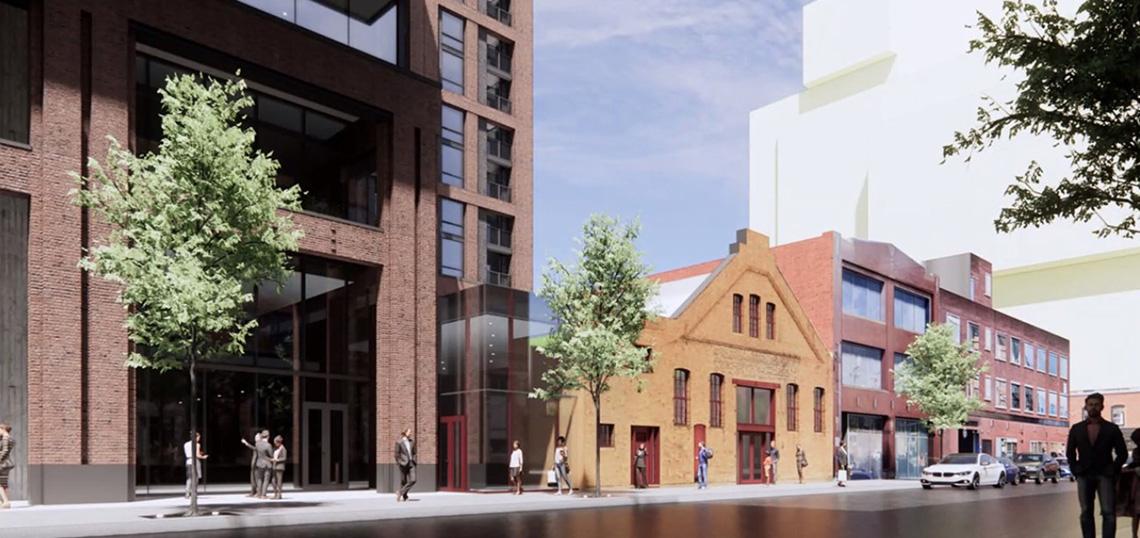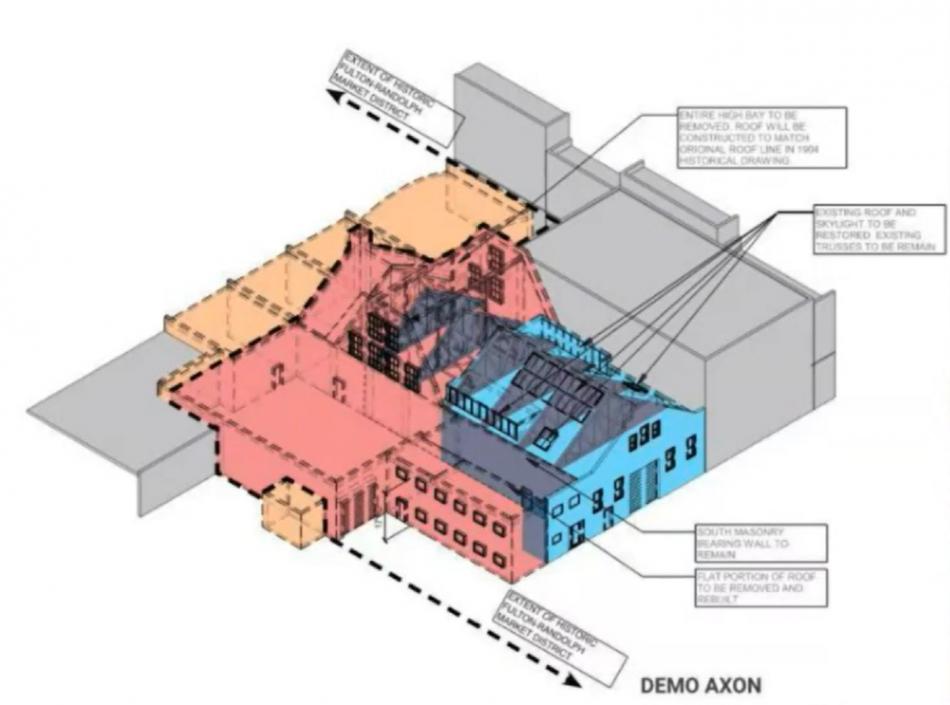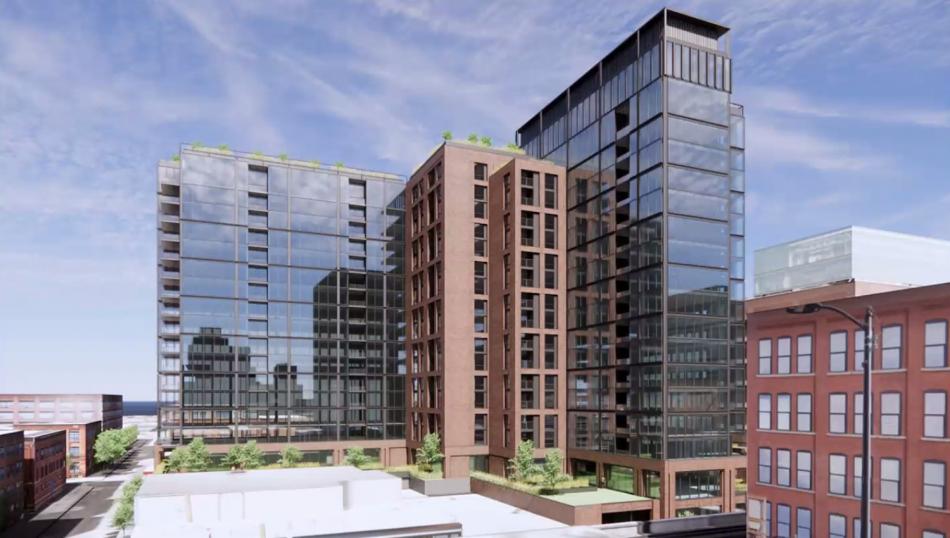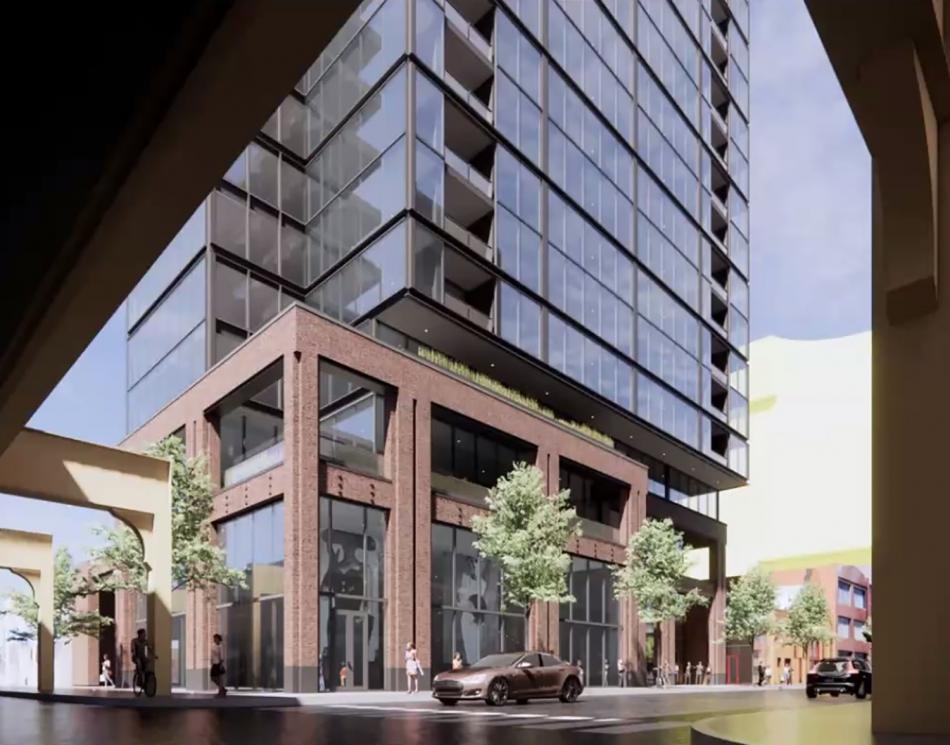The Commission on Chicago Landmarks has approved the partial demolition of the Arthur Harris Building at 210 N. Aberdeen St. Located at the boundary of the Fulton-Randolph Market District, the building in question is part of the larger mixed-use development planned by LG Development Group.
The Arthur Harris Building, originally from 1904, is located at the namesake 210 N Aberdeen Street. As a contributing structure in the landmark district, it is poised to become retail space fronting N Aberdeen Street.
The renovation plan looks to demolish a 1950s addition on the interior of the site whose cross gabled roof is perpendicular to the gable roof of the original portion along the street. The front elevation will be restored and will undergo masonry repairs, window replacement, and the insertion of a retail storefront at the center of the front facade. The original bowstring trusses will also be restored. A non-historic brick addition on the southern elevation will be demolished and replaced with a new glass connector that serves as a division between the new and old portions of the overall scheme.
While the Arthur Harris Building sits in the landmark district, the remaining portion of the irregularly shaped site is outside of the district. The property consists of an empty lot at the intersection of W Lake Street and N Aberdeen Street, the historic Arthur Harris Building, and a few one-story masonry buildings behind Arthur Harris fronting N May Street.
With a design from NORR, the overall development will produce a 19-story mixed-use tower, delivering 414 residential units and approximately 10,700 square feet of retail space. Rising 239 feet, the building’s unit mix will consist of approximately 50% one-bedrooms, 30% studios, and 20% two-bedroom apartments. 102 car parking spaces will be provided.
The project will provide 83 affordable apartments on site, with 41 at 60% AMI and 42 at 100% AMI. Trying to achieve 30% affordability, LG Development Group is working with the city to provide an additional 41 residences either on or off-site.
The $140 million development has gone through multiple city approval processes throughout 2021, receiving approvals from the Commission on Chicago Landmarks, the Permit Review Committee, the Chicago Plan Commission, the Committee on Zoning, and the full Chicago City Council. According to the developers, construction is expected to break ground in spring 2022.










